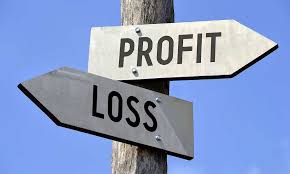|
I was so lucky to have a strong role model in my mom who instilled the importance of daily exercise. Even with five busy kids, she made time for her fitness, whether it was playing with us at the park, swimming or running. Her secret was pretty simple. Consistency. Rain or shine, she kept to a routine, and made fitness a part of her daily schedule.
As a kid who grew up swimming competitively, working out was just a part of my DNA. But keeping it up without a set schedule? That was a whole different story, and something I needed to figure out post-college. During my early twenties while at Nordstrom, group fitness became my go-to, whether it was masters swimming, a run club, or playing intramural volleyball. The camaraderie and opportunity to socialize before and after not only motivated me to attend but also made it so much fun—I looked forward to it each time. As my career progressed and we started a family, my schedule became increasingly less flexible due to longer hours, work travel, and the need to be home by dinner time. It was during this time that I became a master of my calendar so I could prioritize fitness, and I scheduled it into my days and weeks. I started with a goal of working out five times a week. I used weekends to get two in, and then planned 6 a.m. swim workouts or yoga practices to reach five. If I missed the early morning slot, I loaded one or two kids into the baby jogger and did a pre-dinner run with them. Occasionally, I met some Nordstrom employees for midday city runs. Bottom line, despite a somewhat rigid schedule, I made exercise a priority, and used my calendar to make sure I could follow through. As I climbed the corporate ladder and our kids' schedules got crazier, early morning swims, runs or yoga became non-negotiable. They were as sacred as any business meeting. And let me tell you, during those high-stress times, they were a lifeline. I mean, I never skipped a swim on board meeting day 😉 Now, even with more flexibility, I still stick to my fitness routine by planning it out every week. Here's how:
After all of these years, it is still the camaraderie and the socializing before and after workouts that keep me motivated and excited to show up. Lucky for me, I share a lane and a yoga studio with some of my very best friends.
0 Comments
In recent years, I've made it a habit to review my year in early December. Waiting until late December is usually hectic with holiday celebrations, leaving little time for reflection let alone goal setting. A mid-December self-assessment allows me to appreciate favorite moments, assess progress on my goals (personal and professional) and set new ones that align with my values. Whether or not you set resolutions, reviewing the year can be a cathartic practice and help ensure your new goals align with your priorities and values.
For my clients, I conduct an annual review process that includes a set of questions and a financial assessment. In the second week of December, I meet with executive teams (or all stakeholders in smaller organizations) to discuss financial results and address the provided questions. This process allows participants to reflect, share perspectives, and collaborate on the plan for the new year. After a thorough audit, we create a strategic roadmap with measurable goals and priorities. Early involvement of key leaders jumpstarts the new year and ensures alignment. It's a win-win, even before the year begins! QUESTIONS (can be answered for an organization or an individual)
Added for personal reflection:
Working through these questions, both individually and with my clients, has become a cherished practice and a delightful way to conclude the year. I hope you also find it enjoyable and fulfilling. Wishing you all a Happy Holiday Season! I've always believed that in order to gain market share, you first have to to carve out a place in your customer's mind. When a customer thinks about a purchase, you want your brand to be their first thought. Once you’ve secured a place in their mind, and consistently exceed their expectations, you're not just earning their trust but also a meaningful share of their wallet.
You may be thinking, market share gains are already difficult, so how on earth do I get a piece of my customers' minds? 𝐀𝐈 𝐢𝐬 𝐡𝐨𝐰. 𝐁𝐮𝐭 𝐧𝐨𝐭 𝐨𝐧 𝐢𝐭𝐬 𝐨𝐰𝐧. While AI is a powerful tool (I use it everyday) to streamline day-to-day operations, the key is to make sure your brand voice remains intact. When writing copy, simple messages, or crafting campaigns, use AI to enhance and streamline, but always let human tone and authenticity have the final say. The blend of tech and personal touch is where magic happens. 𝐀𝐧𝐝 𝐝𝐨𝐧’𝐭 𝐬𝐭𝐨𝐩 𝐰𝐢𝐭𝐡 𝐜𝐨𝐩𝐲𝐰𝐫𝐢𝐭𝐢𝐧𝐠. You can leverage hashtag#AI for everything from dynamic pricing to ChatBot and customer support to improve your customer’s experience and your results. Here are 5 ways you can use hashtag#AI to gain market share and mindshare RIGHT NOW (generated from hashtag#AI!) * Personalized Customer Experience * Intelligent Pricing * Enhanced Inventory Management * Chatbots & Customer Support * Targeted Marketing Campaigns It has never been more challenging to gain market share, let alone mind share amidst the incessant “noise” and constant flood of information. But don’t underestimate the power of AI, combined with your internal talent and brand voice. It can streamline your efforts, and free you up to focus on things like product development and customer service. This is not a plug… download ChatGPT today and get going! I read something recently that said “all people and households have become businesses.” If you’re wondering how a dinner party may be like your own business, keep reading.
When hosting parties, you know the difference it makes when you spend time and effort in creating a truly special experience. It includes picking a theme, planning a menu, selecting music, offering a signature cocktail, and making a lasting memory. In contrast, a spontaneous get-together, while still nice, doesn't leave the same impression. The same principle applies in your business. Often, despite the best intentions, entrepreneurs tend to operate on the fly, focusing on the task at hand instead of on long-term planning. Day to day focus yields just that — daily results. But, allocating some time to step back, consider your path, and develop a solid plan drastically improves your chances of success and sustainability compared to winging it. Working 𝐎𝐍 your business isn't daydreaming; it's about envisioning your future, making deliberate decisions, and moving your business toward its goals. It's the shift from reacting to opportunities to proactively shaping your business's future. In my experience, the most effective approach begins by determining your end goal and then working backward. Start by deciding on your business's overarching vision. Where do you see it in two or five years? Work with your leadership team and pose this question: "If we were to reach our goals in 2, 5, or 10 years, what would be the reason? What would we have done to move us forward?" Each team member shares their opinion, opening up a great opportunity to explore a wide range of ideas and possibilities. Ideally, this exercise should include all facets of the business, including human and financial resources, technology investments and implementations, talent acquisition, partnerships, product extensions, channel and marketing strategies, and much more. Like planning an unforgettable dinner party, working 𝐎𝐍 your business involves preparation, vision-setting, and focused execution to create a successful future. Don't just wing it; strategize, plan, and watch your business thrive in the long run. Sneakers, Birkenstocks, and Hokas (but I promise I styled them well!) because the days of hobbling around NYFW are long gone for me, but my passion for the fashion world remains.
My goal during Fashion Week was to see as much as possible and soak in what has always been the start of the New Year in fashion and retail. While I'm not chasing after the latest runway trends, I am on a mission to learn how brands are innovating, and how customers are engaging with them. I attended shows, met with some incredible technology partners, engaged in insightful conversations with merchants and buyers, and observed countless customers all over the city - on the streets and in stores. What struck me the most was the ever-evolving fashion landscape, which continues to showcase the essence of creativity, innovation, and style that defines our industry. But above all, I couldn't help but be struck by the resurgence of energy and creativity in New York, reminding me why this time of year is always so special! There was so much to take in, but below are my top 5 insights: 𝐑𝐮𝐥𝐞 𝐚𝐫𝐞 𝐦𝐞𝐚𝐧𝐭 𝐭𝐨 𝐛𝐞 𝐛𝐫𝐨𝐤𝐞𝐧: Instead of a traditional runway show, LAPOINTE did a take over of Crosby Street for an open air show "letting go of all the rules and traditions just doing something that feels very true". Innovative approaches were everywhere, from a designer deconstructing a pair of jeans on the runway, to a brand introducing a new color palette by giving away gelato in the exact colors of their products. 𝐔𝐩𝐜𝐲𝐥𝐞, 𝐑𝐞𝐜𝐲𝐜𝐥𝐞 𝐚𝐧𝐝 𝐔𝐧𝐢𝐜𝐲𝐜𝐥𝐞: Sustainability is a non-negotiable for brands and has become a cornerstone of the fashion industry. Designers are incorporating upcycled and recycled materials into their designs, and encouraging and incentivizing customers to recycle their clothing, anywhere and everywhere. 𝐆𝐞𝐭 𝐢𝐭 𝐰𝐡𝐢𝐥𝐞 𝐢𝐭’𝐬 𝐇𝐨𝐭! Scarcity has always been a powerful driver of excitement and demand, and was very present during NYFW. Limited edition collections, short-term pop-up shops, and exclusive collaborations create a sense of urgency and turn the shopping experience into more of a treasure hunt and added to the buzz all over the city. 𝐅𝐮𝐬𝐢𝐨𝐧: 𝐈𝐭’𝐬 𝐍𝐨𝐭 𝐉𝐮𝐬𝐭 𝐟𝐨𝐫 𝐅𝐨𝐨𝐝𝐢𝐞𝐬 It was great to see fashion brands collaborating with artists, designers, musicians and influencers from all over the world, bringing fresh perspectives to the fashion scene. 𝐘𝐨𝐮𝐫 𝐒𝐞𝐜𝐫𝐞𝐭 𝐖𝐞𝐚𝐩𝐨𝐧 QR codes have become fashion's best friend. Customers scan QR codes at fashion shows, in stores to access exclusive content, and street-side to redeem giveaways. A great way to engage with customers; an even better way to collect first-party data. As a McKinsey & Company consultant, I traveled to Guangzhou, China to teach a workshop on Merchandising Fundamentals to a group of Chinese-speaking merchants. No one in the audience spoke or understood ANY English. Facing the language barrier, I quickly realized the importance of translators. As I prepared for my presentation, my husband's advice was “approach the challenge like an officiant reciting wedding vows with the happy couple — the officiant has to make sure the recipients remember and recite what is spoken to them.” So I carefully chose my words (dropping the typical retail vernacular) and slowed my pace to effectively convey my personal insights and practical tools the merchants could understand and use immediately. Now at Assemble Inc as SVP of Global Retail, I find myself in the role of the translator, listening to the challenges and dreams of business owners and leaders, and communicating the vision to our team of engineers, developers and designers. After over thirty years in retail, having walked in their shoes, I understand their issues and goals, and translate them into a language our technical experts understand, paving the way for transformation and success. Without someone to bridge the gap between the “art & science” and transfer information from one side to the other, the real problems might remain uncovered or the solutions might miss the mark! I spoke about this and much more as a guest on a recent podcast with Future Commerce and BigCommerce. There is a common misconception that recruiting an expert in data analytics or data science is going to solve your problems. But often the new talent with data expertise does not have the domain expertise required to fully understand these problems. Today’s data scientists are highly capable but most have not had “the job” or been directly accountable for results. In the absence of practical experience you don’t know what you don’t know, and gathering and applying the right data to improve performance proves difficult. Today’s “experts” do not know the questions to ask, what information to collect, and what to discard in order to improve the P&L. Only with experience do you learn how to prioritize and use critical information to guide the decision-making process.
If your goal is to improve gross margin the obvious starting point is reducing cost of goods, increasing price, or reducing markdown rate. But if you dig a little deeper and examine your stock-to-sales ratios, regular price sell-thru, allocation and performance by location / color & size, you may be able to improve your profit without adjusting price, quality, or promotional activity. With the benefit of experience, you learn what data points are important, how to analyze and leverage them to make smart decisions and improve the business. BOTTOM LINE: You and your business need data analysis expertise, but make sure you marry it with real sector expertise. Ideally people who have had real P&L responsibility, who understand the domain dynamics and can ask the right questions of the data—and help shape and improve decisions that positively impact the business. After a few years of unprecedented growth and spending, retailers entered 2023 with a renewed focus on profitability hoping to convert revenue increases to bottom line profit. As we head into the rest of this year, the majority of retail executives are concerned about maintaining or improving profit margins in what continues to be turbulent times. Rising costs as a result of inflation are putting tremendous pressure on profit, coupled with on-going supply chain challenges and a very unpredictable consumer.
But, regardless of extenuating circumstances, profitability is the key to the long-term health of any retail business. While improving revenue is often the primary focus of most retail businesses, sales alone do not guarantee profitability. Profitability is a multi-dimensional challenge that involves managing inventory, optimizing channels, and having an efficient operating structure. INVENTORY MANAGEMENTThe right item, in the right place, at the right price, at the right time. That is inventory management. The best place to start is with an accurate sales plan, a clear view of your target customer and good data. Your data should inform your customer’s product preferences, priorities and demands across styles, skus, sizes, and price sensitivities. Your data will help to guide pricing, assortment planning, stock replenishment, and forecasting. When you determine how much you can sell, you can plan your inventory according to what you believe your customers want, and at a stock to sales ratio that improves your productivity. Additionally, retailers can use inventory management techniques such as dropshipping, cross-docking, and vendor-managed inventory to minimize inventory and improve efficiency. CHANNEL OPTIMIZATION Over the past few years, many retailers have expanded their distribution channels which has created a significant degree of complexity. Brick-and-mortar stores, e-commerce platforms, marketplace and wholesale points of sale all perform differently. While sales, inventory ownership, featured product and customized messages may differ, it is essential to have a unified and cohesive customer experience across all channels. Optimizing channels begins with determining sales plan, product assortment and inventory allocation by channel using data. Understanding, anticipating and accurately planning for customer demand by channel will drive top line sales and sell through, increase customer satisfaction, and ultimately improve profitability. OPERATIONAL EFFICIENCY It’s all about less Excel spreadsheets, and more automated processes. Streamlining business operations and automating manual processes is one of the many benefits of using technologies. You will have more accurate dashboards, quicker and better decisions, less costly mistakes, and perhaps less headcount. Controlling and reducing costs while improving business processes is the quickest way to impact your profit. BOTTOM LINE Improving profitability in today’s market is a challenge, but it is not impossible. Whether you focus on inventory management, improving your channel productivity or creating more efficiency within your organization, there is profit to be found if you start with your target customer. All of your answers will be revealed when you filter your alternatives and decisions through the lens of delivering an extraordinary customer experience. After 10 years of independent consulting, I have joined a Seattle-based technology company as Director of Global Retail combining my years of experience with their success in engineering and technology integrations. I never imagined I’d go “in house” again but the incredible people combined with the unique opportunity was too good to be true. Each and every day, I am inspired and humbled by the experience, talent and passion within the organization, and honored to be leading them to the future.
My last 10 years as a solo-prenuer have been rewarding in so many ways. I have traveled the world working alongside BCG and some of the best brands and retailers in the world, sharing my insights and experiences while learning from some of the brightest in the retail business. Most importantly, I had the gift of time, setting my own schedule allowing me to be 100% present to my family, and swim almost every day at noon! I can honestly say, it’s been the best 10 years of my life and I am so grateful for all of the people, places and opportunities afforded to me. I am so excited for this next chapter, and so fortunate @Assembleinc. supports the same kind of work / life balance. Stay tuned as this little company evolves and blazes a trail! 𝐃𝐎 𝐍𝐎𝐓 𝐬𝐢𝐠𝐧 𝐭𝐡𝐚𝐭 𝐍𝐄𝐖 𝐒𝐓𝐎𝐑𝐄 𝐥𝐞𝐚𝐬𝐞 𝐣𝐮𝐬𝐭 𝐲𝐞𝐭!
DTC brands are racing to open physical stores in an effort to diversify and capitalize on the foot traffic that is headed back to brick and mortar stores. In most cases, brands are looking for more affordable ways to acquire customers and build their brands. By following customers to “trending” zip codes like Austin, Nashville and West Palm Beach, brands are banking on increased market share. As a highly active customer, I want these brands to come to my city and my neighborhood. But, I am afraid many owners and operators are going to be disappointed with their performance because they haven't fully answered the following questions: 𝐖𝐇𝐎 𝐢𝐬 𝐲𝐨𝐮𝐫 𝐭𝐚𝐫𝐠𝐞𝐭 𝐂𝐔𝐒𝐓𝐎𝐌𝐄𝐑? What are their shopping habits? What is driving their behavior? What are their preferences? What are their product priorities? How has their lifestyle changed? 𝐖𝐇𝐀𝐓 𝐢𝐬 𝐭𝐡𝐞 𝐏𝐔𝐑𝐏𝐎𝐒𝐄 𝐨𝐟 𝐲𝐨𝐮𝐫 𝐬𝐭𝐨𝐫𝐞? To build brand awareness? To drive loyalty? To acquire customers? To increase revenue? To gather data? To test a new concept or brand extension? To leverage inventory? 𝐖𝐇𝐄𝐑𝐄 𝐢𝐬 𝐲𝐨𝐮𝐫 𝐢𝐝𝐞𝐚𝐥 𝐥𝐨𝐜𝐚𝐭𝐢𝐨𝐧? In a high traffic location? In a mall or lifestyle center? In a concept-store as a sub-lease? As a pop-up in a dept store? What are your best brand adjacencies? What is the ideal size, layout, format? 𝐇𝐎𝐖 𝐰𝐢𝐥𝐥 𝐲𝐨𝐮 𝐝𝐢𝐟𝐟𝐞𝐫𝐞𝐧𝐭𝐢𝐚𝐭𝐞 𝐲𝐨𝐮𝐫 𝐬𝐭𝐨𝐫𝐞? With technology, customer experiences, services, additional categories, presentations, pause points, layout, inventory presentation, food and beverage? 𝐖𝐇𝐘 𝐰𝐢𝐥𝐥 𝐜𝐮𝐬𝐭𝐨𝐦𝐞𝐫𝐬 𝐞𝐧𝐠𝐚𝐠𝐞 𝐰𝐢𝐭𝐡 𝐲𝐨𝐮𝐫 𝐛𝐫𝐚𝐧𝐝? Why will they spend their hard earned dollars with you, in your location vs. the unlimited number of alternatives? There is no right answer to any of these questions, but it is critical they be addressed. When these questions (and many more) are fully vetted, owners and operators can proceed with confidence and deliver an outstanding physical retail store. If you need help tackling any of this, please reach out. I am working through this with several clients. |
|






